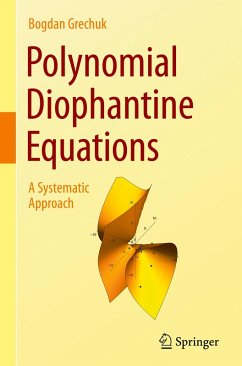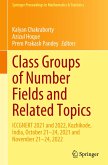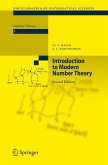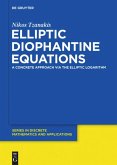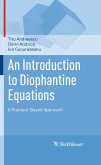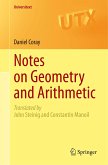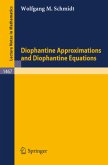This book proposes a novel approach to the study of Diophantine equations: define an appropriate version of the equation's size, order all polynomial Diophantine equations by size, and then solve the equations in order.
Natural questions about the solution set of Diophantine equations are studied in this book using this approach. Is the set empty? Is it finite or infinite? Can all integer solutions be parametrized? By ordering equations by size, the book attempts to answer these questions in a systematic manner. When the size grows, the difficulty of finding solutions increases and the methods required to determine solutions become more advanced. Along the way, the reader will learn dozens of methods for solving Diophantine equations, each of which is illustrated by worked examples and exercises. The book ends with solutions to exercises and a large collection of open problems, often simple to write down yet still unsolved.
The original approach pursued in this book makes it widely accessible. Many equations require only high school mathematics and creativity to be solved, so a large part of the book is accessible to high school students, especially those interested in mathematical competitions such as olympiads. The main intended audience is undergraduate students, for whom the book will serve as an unusually rich introduction to the topic of Diophantine equations. Many methods from the book will be useful for graduate students, while Ph.D. students and researchers may use it as a source of fascinating open questions of varying levels of difficulty.
Natural questions about the solution set of Diophantine equations are studied in this book using this approach. Is the set empty? Is it finite or infinite? Can all integer solutions be parametrized? By ordering equations by size, the book attempts to answer these questions in a systematic manner. When the size grows, the difficulty of finding solutions increases and the methods required to determine solutions become more advanced. Along the way, the reader will learn dozens of methods for solving Diophantine equations, each of which is illustrated by worked examples and exercises. The book ends with solutions to exercises and a large collection of open problems, often simple to write down yet still unsolved.
The original approach pursued in this book makes it widely accessible. Many equations require only high school mathematics and creativity to be solved, so a large part of the book is accessible to high school students, especially those interested in mathematical competitions such as olympiads. The main intended audience is undergraduate students, for whom the book will serve as an unusually rich introduction to the topic of Diophantine equations. Many methods from the book will be useful for graduate students, while Ph.D. students and researchers may use it as a source of fascinating open questions of varying levels of difficulty.

